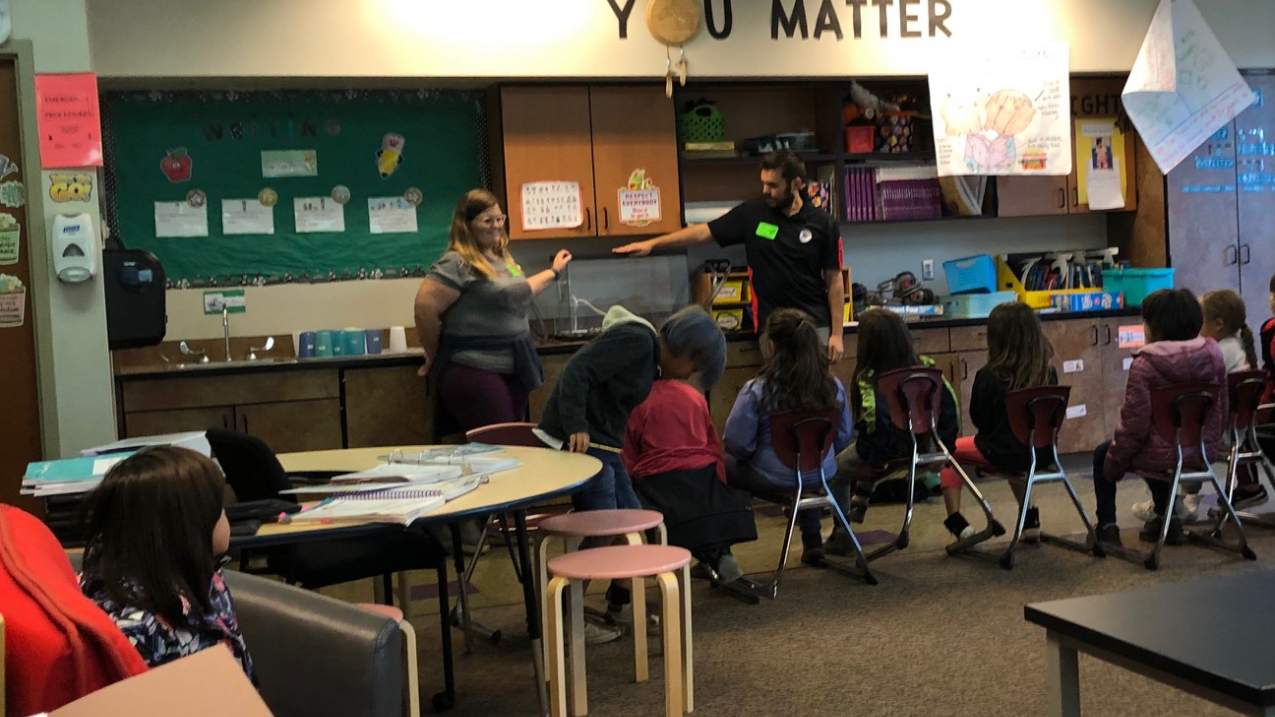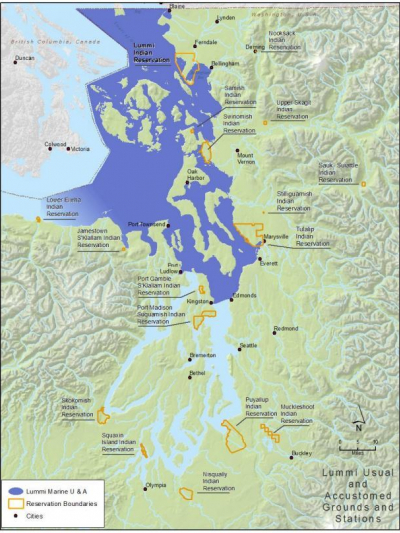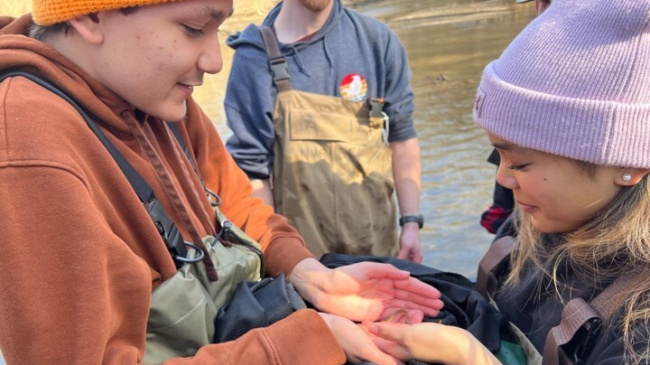In the Pacific Northwest, Lummi Nation has kept their ancient knowledge and schelangen (shuh-LANG-un; “way of life”) alive by transmitting their cultural knowledge, worldview, and traditions to the next generation. Watershed management is particularly important to the Lummi community because of the abundance of one of their most culturally important food sources, salmon, which depends on watershed health and quality.

In 2019, Lummi Nation students engage in meaningful watershed educational experiences and related stewardship activities including measuring water quality, planting native plants to restore habitat, raising salmon in the classroom for release in a nearby stream, and observing the spring fishery by tagging and tracking Chinook salmon returning to their natal spawning grounds. (Image credit: Paul Cline)
Schelangen is one of Lummi Nation’s oldest collections of data for knowing seasons, animals, and places. This ancestral wisdom guides selalexw (suh-LaL-uh-hw; “ancestral wisdom guides the decisions of tomorrow”), which hold cultural values and teachings about caring for the land and sea. Since 2016, Lummi Nation has received five NOAA Bay Watershed Education and Training (B-WET) awards to support integrating traditional ways of teaching schelangen into the Lummi Nation School curriculum. This is accomplished through Meaningful Watershed Educational Experiences, place-based experiential learning focused on investigations into local ecosystems that enable students and teachers to develop stronger relationships to their environment and community.
Their most recent B-WET-supported project aims to ensure that Lummi schelangen, including leadership skills in natural resources management, carries forward into the future. Through this project, the Lummi Natural Resources Department engages approximately 150-250 elementary school students annually at the Lummi Nation School in active stewardship of the environment. Community leaders, Lummi natural resources experts, and elders teach students about topics such as the salmon life cycle, salmon habitat, and the importance of water quality. Throughout the curriculum, students learn the importance of the five C’s — cold, clean, and clear sediment-free water, as well as connected and complex river ecosystems — to salmon health.
The NOAA B-WET grant supports hands-on learning experiences within these lessons. For one of the hands-on learning activities, sixty students assembled salmon aquariums and engaged in scientific inquiry to hypothesize how the aquariums model a healthy salmon habitat. The second and fourth grade classes collectively raised 300 Coho salmon from eggs. “The kids were vested in salmon. They learned so much from the interactive tank setup, and they were proud of the salmon,” said fourth grade teacher Alana Marshal. All activities on these topics are embedded into the school curriculum through the sciences and art, and then shared throughout the community in video presentations including at the Lummi Nation’s First Salmon Celebration.
The Lummi Nation youth project provides Lummi students with tools and knowledge to become the next generation of natural resource managers, empowering them to improve the environment and ensure the survival of their community and culture.

NOAA brings thousands of K-12 teachers and students around the country outside for hands-on environmental education opportunities as part of B-WET projects like this one every year. In fiscal year 2020, 160 new and continuing projects benefitted from a total of over $7.1 million in funding from the NOAA Office of Education’s B-WET program. Since 2002, NOAA has awarded over $100 million to support 814 B-WET projects.



